One amazing sight in the French city of Bayeux, in Normandy, is the Bayeux Tapestry. Hundreds of knights on horseback, animals both real and mythical, sailing ships and woody forests, along with Latin inscriptions, march along this remarkably detailed embroidery of colored wool to depict scenes from the Norman Invasion of 1066. It shows William the Conqueror’s reasons for going to war, the preparations made for the crossing, and the Battle of Hastings in 1066 from a Norman perspective. The inspiration for the tapestry was likely Bishop Odo of Bayeux, William’s half-brother, who ordered the tapestry to celebrate both the Norman invasion of England and the completion of Odo’s cathedral. In addition to the historical details of war, the tapestry includes borders lined with scenes from Aesop’s Fables such as the fox and the crow. Scholars have debated the meaning of these scenes, and some suggest that the British embroiderers expressed their protest of Norman rule by including these stories of deceit and theft on the tapestry.



During the Middle Ages, the Normans ruled Bayeux because of the raids of their Viking ancestors. According to the Tapestry, Duke William was the official successor to Edward the Confessor, since Edward had no heirs and had spent 30 years in exile in Normandy. Harold Godwinson, Edward’s brother-in-law, broke his oath to Duke William, motivated by a lust for power and a desire to protect his kingdom from Norman domination. Regardless, Duke William invaded England and defeated Harold at Hastings after he was shot in the eye by an arrow. French became the language of the court, and Norman nobility became the new land- owning aristocracy of England. This important event changed the relationship between France and England forever.


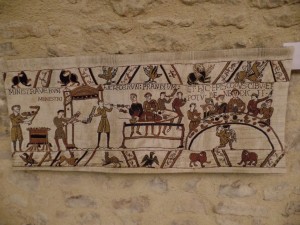
Normandy’s coast has been the site of many battles. Almost 900 years after 1066, on June 6,1944, the D-Day invasion brought Allied troops to these shores. Though the coastal towns endured heavy bombardment, Bayeux was amazingly spared from extensive damage. British troops and their American allies had come to liberate France. Just as the Bayeux Tapestry is a reminder of the wars of the Medieval era, Arromanches, part of the temporary ports that the English set up at Gold Beach after gaining a beachhead, is a reminder of the terrible sacrifice of the Allies who died in regaining French territory. Part of this mulberry harbor can still be seen in the ocean. Apparently, this logistical operation, like much of D-Day, was incredibly chaotic. Critical supplies were left aboard ships for many hours because of misplaced manifests, and supplies were brought on shore randomly.



Caen, a major city and center of regional railroad networks, suffered the worst bombing. The Caen Memorial Museum documents the history of WWII through the end of the Cold War. Here there is further visual evidence of the suffering of the French people through four years of German occupation. While the French did not experience the bombing or mass casualties of the Russians on the Eastern Front, the country was still a broken nation. German authorities forced the French to work in their factories and ordered rationing on mass scale. Although Charles de Gaulle put forth the “myth of the resistance,” the claim that all French people, actively or passively, were involved in resistance against the Germans, the museum shows both collaborationists’ and resistance members’ arguments concerning German occupation.

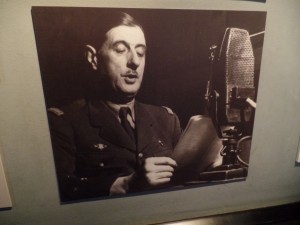
As an American, I am both humbled and proud to visit the American Cemetery that honors the sacrifice of American soldiers who were killed on D-Day and subsequently in the invasion of the continent. Almost 10,000 servicemen of the Army, Army-Air Corps, and Navy died. I walked solemnly through this cemetery, where our study group placed 13 flowers on Buckeye (Ohio State) graves. These members of our OSU family served their nation and the world at a moment when terror reigned. I found out that President Theodore Roosevelt’s son is buried there as well. He was the only general to lead the invasion of Utah Beach on the beach itself during the invasion.



Today, we can watch grainy newsreels of the Allies as they approached the beaches of Normandy under heavy fire from the German artillery that was dug in along the Norman shore and share the fear of those who leap from the boats onto the sand. Perhaps we have similar emotions as those who passed along the Bayeux Tapestry, watching the Battle of Hastings unfold in colored thread. Battles across the centuries keep our attention. Bayeux and the beaches of France hold the reminders of so many lives cut short as nations struggle for power.
Eugene Hardin
London: Heart of Empire and Victorious City in WWII
Wether I walk in Trafalgar Square, The British Museum, Churchill War Rooms, Tower of London or the various memorials to men and women alike which have become immortal in British History such as the Duke of Wellington. I can’t help but see the reminders of the British Empire. The city of London for over 250 years was the capital of an empire that owned 1\3 of the world’s landmass. This empire was characterized best by the quote of “The Sun never sets on the British Empire”. Before WWII, The British Empire was at it’s largest extent due to acquiring German Colonies after ‘The Great War’. However this was to prove a hollow victory and despite territorial acquisitions, the end of WWI revealed a vulnerable empire. Despite defeating Germany in WWI, the Treaty of Versailles in 1919 and the rise of Adolf Hitler in 1933 as chancellor of Germany made another conflict inevitable.
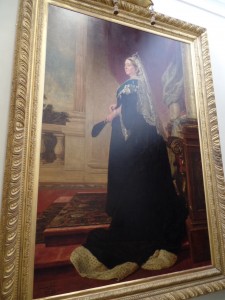
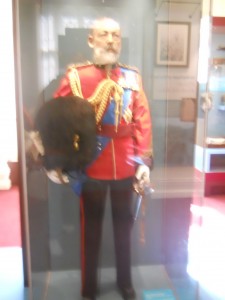
We learned in the Churchill War Rooms that in order to save Britain, Churchill had to accept the lend lease act even though this plunged Britain massively into debt and so this made Britain unable to retain the empire. I find Churchill is seen as a contrasting figure because while being a son of the empire, he realized that in order for Britain to ultimately triumph in WWII it would need the US and the Soviet Union to fight as allies against Nazi Germany. Especially during ‘The Blitz’ in which the city was devastated by German Bombers of the Luftwaffe. However Churchill and the British people endured and came out the other side of those dark times. I saw a photo at the War Rooms of Saint Paul’s Cathedral surrounded by burning buildings however the church was completely untouched, for the photographer this must’ve been a vision sent strait from hell but god in the end is ultimately triumphant.
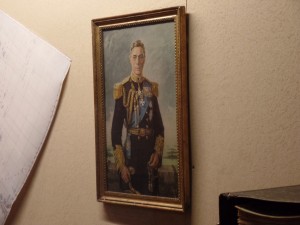
We will soon cross the channel which separates England from the continent and so I can’t help but think what the men of HMS Belfast looked out on the channel during D-Day. I have learned through my time on HMS Belfast how instrumental this heavy cruiser was in aiding Britain and the Soviet Union during WWII. This ship was responsible for running dangerous arctic convoys to Murmansk,Russia in temperatures reaching below -30, destroying Scharnhorst which was a german battle ship in the battle of north cape in 1943 and finally culminating during June 6, 1944 when Operation Overlord commenced to liberate France and the rest of Western Europe from Nazi Germany. This heavy cruiser and it’s crew should’ve had a movie done about it’s many accomplishments but like many untold heroes of WWII, this one must be seen to truly get a glimpse of what the British navy went through to guard Britain and defeat the German Navy.


Despite the loss of the British Empire after WWII. I see reminders not just in it’s monuments but in the people of London. This is truly a cosmopolitan city brought about due to the empire. I have seen Arabs from Iraq and Jordan, Africans from Sudan down to South Africa, Hindus and Sikhs from India, Chinese from Malaysia, Singapore and Hong Kong. London while evoking an imperial past can still be seen through modern eyes as a great city which story is still being written. While it’s hard today to understand what the British went through in those dark days when they stood alone against the might of Hitler’s Germany, I am proud to know that our nation came to aid Britain in WWII and liberated the continent from tyranny and oppression.
